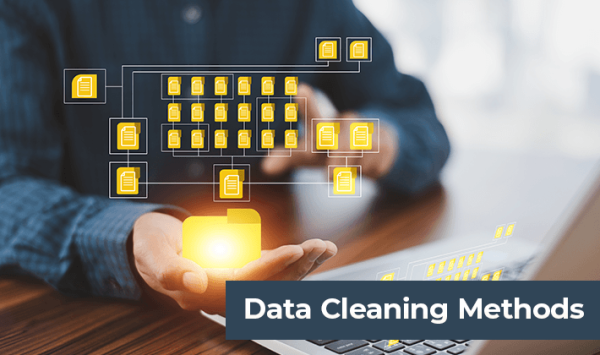A crucial phase in the data preparation process is data cleaning, commonly referred to as data cleansing or data scrubbing. It entails locating and fixing mistakes, inconsistencies, and inaccuracies in datasets to guarantee the information is correct, dependable, and appropriate for analysis.
Making informed decisions, gaining insightful understanding, and maximizing the benefits of data-driven efforts all depend on effective data cleaning. In this post, we’ll look at eight effective data-cleaning methods to raise the quality of your data.
Powerful Data Cleaning Methods
-
Get Rid of Duplicates
A dataset with duplicate records can produce skewed analytical results and false conclusions. A key data-cleaning strategy is to find and eliminate duplicate records. You can use software tools or programming languages like Python or R to detect and remove duplicates based on key identifiers or a mix of features, depending on the size and complexity of the dataset.
-
Missing Values are Handled
Missing data is a frequent problem in datasets and can make analysis difficult. There are numerous ways to deal with missing values, such as:
- Deletion: Eliminating columns or rows that have missing values. Despite being straightforward, this could result in data loss, especially if a sizable percentage of the dataset is missing data.
- Imputation: Substituting approximated values for missing data using statistical techniques like mean, median, or regression models. Imputation aids in maintaining the entire dataset but could cause bias.
- Machine learning methods: Using machine learning methods, predictive imputation predicts missing values based on other attributes. Although it calls for a more complicated implementation, this method may be more accurate.
-
Normalization Data Formats
Analytical errors can be caused by inconsistent data formats. Data purity requires standardizing forms for dates, currencies, phone numbers, and addresses. The dataset can be made uniform by using regular expressions or particular formatting tools.
-
Managing Outliers
Extreme values that considerably differ from the rest of the data are considered outliers. They may have a negative impact on machine learning models and statistical studies. Outliers can be found and handled using a variety of statistical techniques or visualization tools. Depending on the context of the analysis and your domain knowledge, you can decide whether to eliminate, transform, or impute outliers.
-
Validate and Fix Mistakes
The dataset may contain inaccuracies due to the frequent occurrence of data entry errors. Errors can be found and fixed by implementing validation procedures and cross-referencing data against dependable sources. For instance, correcting errors and enhancing data accuracy can be achieved by comparing client information with a trusted database.
-
Remove Conflicting Data
When data entry does not follow predetermined standards or business regulations, inconsistencies occur. These irregularities could be misspellings, acronyms, or erroneous capitalization. Such inconsistencies can be systematically found and dealt with with the aid of data validation rules or data profiling tools.
-
Categorical Variable Encoding
Non-numeric data types such as gender, color, or product categories are examples of categorical variables. It is possible to successfully use categorical variables in mathematical models by converting them into a numerical format (for example, one-hot encoding). Encoding also guarantees consistent representation, preventing inconsistencies in analysis.
-
Check the Integrity of the Data
Maintaining the integrity of your data over time requires routine data integrity tests. Data corruption or unintentional changes can be found and quickly fixed by implementing checksums, hash functions, or data validation methods.
Conclusion
In order to guarantee the integrity and dependability of your data, data cleaning is an essential activity. This process enables informed decision-making and more precise insights. You can improve the quality of your data by utilizing the eight efficient data-cleaning techniques covered in this article.





